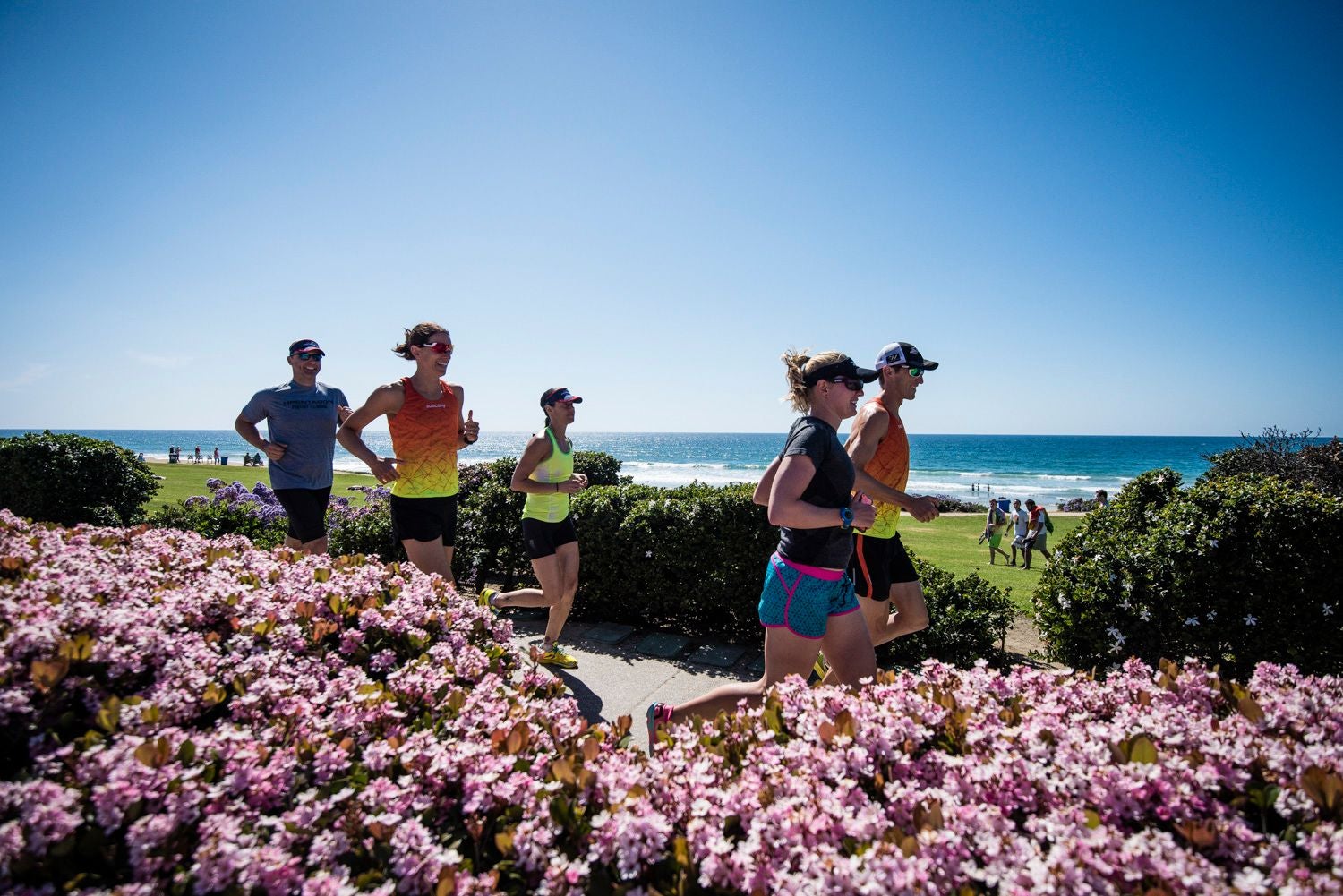Group Running Etiquette 101

Photo: John David Becker
There are no friends like running friends. And joining or forming a running group gives you all that great running-friend stuff—challenge, support, continuity, laughs, understanding—in spades. But not everyone always loves your group as much as you do (oh, hi, pedestrian/car/dog walker). And not everyone in every group is equally loved (we mean you, never-wears-deodorant guy). Here’s how to make the group run work, whether you’re five pals running together or you’re with a group of 50…or hundreds.
Think Beyond The Group
Your group really is the best. “But it’s easy to get to chatting and having a good time and stop being aware of your surroundings or forget to take stock of other people on the path,” says Chris Wehrman, a coach for Nike Run Club in Chicago and for Edge Athlete Lounge. You see it all the time—runners traveling in a clump and scaring the heck out of someone they’re passing or swallowing up an oncoming runner or pedestrian. How to play nice: A simple hand raise lets your fellow runners know someone’s ahead.
And verbal cues help the pedestrian know what to do: “Tell them you’ll move around them, and which direction you’ll go. Be clear that they don’t need to walk on the street to avoid you,” says Emily Saul, co-leader of the November Project Boston.
Also pull out that hand raise if you’re changing pace during a run—especially when there are bikes around. Sudden and noncommunicated changes rarely end well.
Pace It Right
“I like to stress that we’re not individuals who are running together, but we’re like-minded people who are a community,” Wehrman says. So you want to run with—not against—your teammates. “It’s a training run, not a race,” says Joel Lowy, program director for the Galloway NYC Running Club. It might be okay to draft off someone in a race, but on a regular day, keep an appropriate distance from the person in front of you.
Keep in mind that full speed ahead doesn’t always get you ahead. “We’re humans, and we’re athletes, so we have good days and bad days,” Wehrman says. “When we’re having good days, it doesn’t necessarily mean we have to push the pace. It can still benefit us to hang back with the people who might not be feeling as good. Helping teammates feel like part of the group builds a nice reciprocity.” You don’t have to run with the last person—every group should have a sweep in the back so no one gets left behind, as well as a pacer in the front—but hanging with the group might be more rewarding than running off the front.
You Don’t Have To Hug, But…
Do what you can to feed the community spirit. Ask people’s names, says Lowy. Stick around and cheer for the slower athletes. And yes—go for that hug sometimes. If you’re running with the November Project, expect it: “We’re huggers,” Saul says. Sometimes they might ask tribe members to turn to the person next to them and say, “I’m glad you’re here today.” “We like to give people opportunities to interact with each other,” she says, which is why they sometimes do a workout where you have to do five burpees if they catch you running alone. “We really want to create prompts for people to start talking to each other.” Because that’s why you’re there.
Telltale Signs You Might Be “That” Runner
- Jingling! Nobody wants to hear your keys for every step of that 10K. Or even 5.
- “Half-stepping” someone. If you’re running a half step ahead of your partner the entire time,
why not just drop back those 6 inches and run side by side with them? - Running more than two abreast. Even if the juiciest three-way conversation is going on,
someone’s got to drop back a little. - Headphones. A group is about the group—not about sealing off your ears and doing your own workout that happens to start and finish at the same time as the group’s.